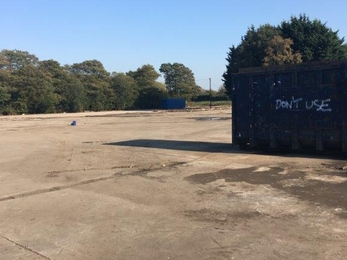Analysis conducted by specialist environmental consultants has shown that the peat under the concrete still holds pollution that could cause damage to the sensitive bog habitats. Advice to the project partners, Shropshire Wildlife Trust and Natural England, is to leave the concrete and hard-core surface in place in order to avoid the disturbance of the contamination beneath and risk of this being released into adjacent and downstream water courses. Now that the site is free of waste and potentially hazardous scrap metal, the scrapyard will be used as a location for events. A new Events Officer has recently been recruited to the BogLIFE team and she will coordinate a number of events focusing on the wildlife and social history of the Marches Mosses
Having been left largely undisturbed for a few months, nature has already begun to reclaim the scrapyard. However, there are plans to place fresh turf on parts of the scrapyard to further attract wildlife. This will bury remnants of glass and scrap and help nature on her way. Turf will be sourced from local fields that are being returned to peatbog. It is intended that turf works will begin in August.
Some small scale tree removal of fast-growing poplars, birch and willow on abandoned peaty fields has been carried out west of the scrapyard to create to permit their restoration to bog, fen and wet woodland carr habitat. . The removal of trees will also contribute to creating corridors for birds such as curlews, which nest on the Moss but travel to surrounding wet meadows to feed. This work will continue next winter.
On the opposite side of the canal from the scrapyard are some wet fields which have become known as the Morris’s Bridge fields. Open water often builds up on the fields through the winter and then dries out during summer. The resulting pools attract huge numbers of migratory wetland birds; from geese to plovers and sandpipers and because of this they have become popular with birdwatchers. There are plans to create banks of peat and soil (bunds) around the site to better manage the water on the fields throughout the year. This will not only benefit the local wildlife but also protect surrounding properties, as flood waters will be held back by the bunds and will not increase flood risk
Access to the fields is currently restricted, so birdwatchers view bird activities from the adjacent lane. The fields are now recognised as a key site for birds in North Shropshire, so the BogLIFE team are planning to install a bird watching hide with a small car park.
All of the work being carried out aims to benefit the local community, the environment and the wildlife that makes the mosses of this area so special.

